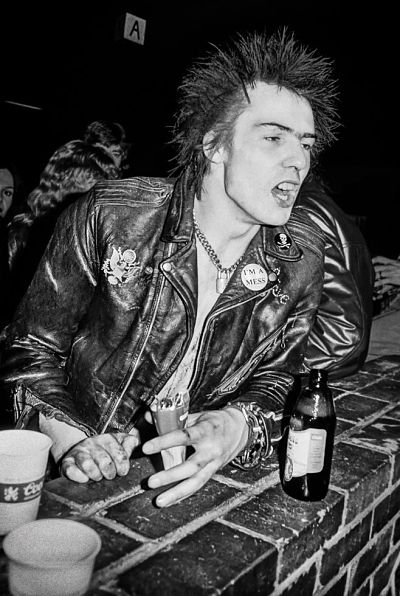

He had to be seen in this shirt” (Lydon, 60). He wouldn’t wear a jacket because he would buy this new shirt or something. “It would be midwinter and bitter cold outside. According to Rotten, Simon was a follower, not a leader, when it came to fashion, and he was dead serious about his looks. Rex, and adopted their outrageous, effeminate style of dress.


Finally, the two settled in Hackney, London, where, at a state art school, Simon first met Johnny Rotten, then known as John Lydon.īy that time, Simon had developed a love for glam rockers like David Bowie, Roxy Music, and T. After a brief marriage to Oxford student Chris Beverley, Simon’s mother worked a succession of jobs in several different towns. Upon returning to England with the financial assistance of the British High Commission, Beverley became involved with hard drugs. At one point, she and young Simon lived on the Spanish island of Ibiza, where it is said she made a living by selling marijuana. Left to raise the boy alone after splitting with his dad, Beverley moved frequently and drifted from job to job. Born John Simon Ritchie on May 10, 1957, Vicious was the son of Anne Beverley, described by Johnny Rotten as “an oddball hippie”. Given the turbulent nature of his childhood, it’s little surprise that Vicious was unable to cope in the adult world. About the only adjective that can be irrefutably applied to Sid Vicious is “troubled”. But just who was “the real person” anyway? Reminiscences of friends and acquaintances offer endless contradictions, alternately portraying him as slow, intelligent but inarticulate, sensitive, destructive, kind, angry, passive, and violent. But even he only played the stage persona as opposed to the real person” (Lydon, 150). Besides being a wildly inaccurate depiction of the punk scene, the Alex Cox cult hit upset Vicious’ bandmate and friend Johnny Rotten, who said, “The chap who played Sid, Gary Oldman, I thought was quite good. Although he contributed little to punk music, Vicious remains its most famous name, and his cult has only grown thanks to T-shirts and posters bearing his likeness and slogans like “Don’t let them take you alive” and “Drugs Kill”, and especially the iconographic 1986 film

The punk rock version of James Dean, Vicious solidified his fame by dying young (at age twenty-one), leaving behind memories of his notorious behavior and the mystery of girlfriend Nancy Spungen’s murder. While stories like these are in no short supply, neither are fans like the barista, who continue to idolize Vicious - a junkie, accused murderer of his girlfriend, and by all accounts unable to play his instrument - nearly twenty-three years after he died of an overdose. Among the many unflattering anecdotes about the Sex Pistols bassist that appear in the book is one in which, while going through heroin withdrawal, he simultaneously vomited and defecated on a groupie as she was performing oral sex on him. As soon as I was away from the counter, I explained to my companion just how disturbing the young woman’s admission was. “Have you ever read the bookġ2 Days on the Road? I fell in love with him after reading that book”. “Oh, I’m in love with Sid Vicious”, she confided. One evening as a friend and I were ordering coffee, the young barista behind the counter noticed my Sex Pistols T-shirt. Editor’s Note: This article was originally published on PopMatters on 8 November 2001 as part of our “25 Up: Punk’s Silver Jubilee” series.


 0 kommentar(er)
0 kommentar(er)
